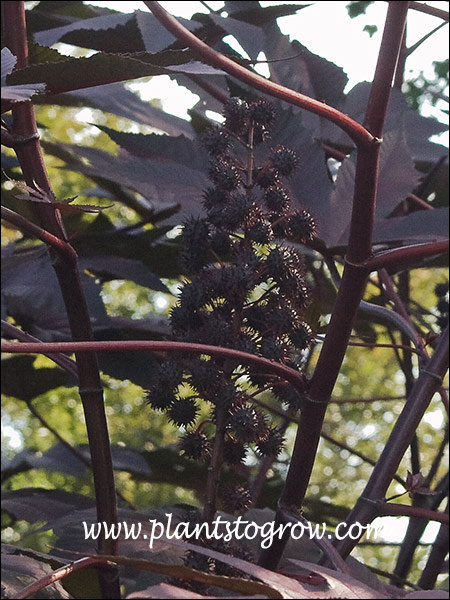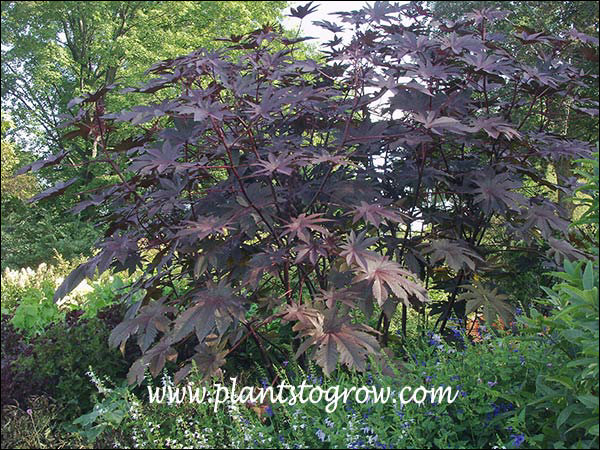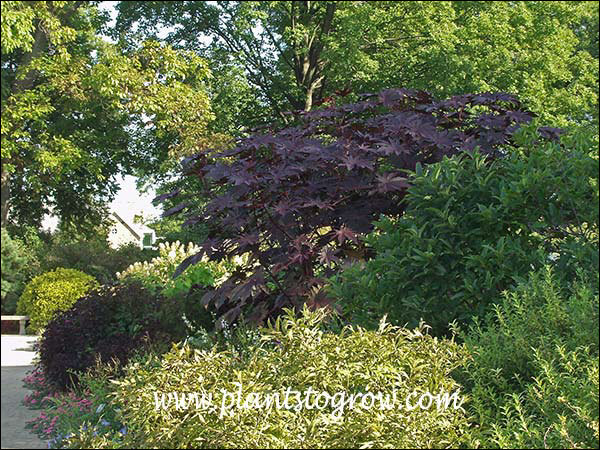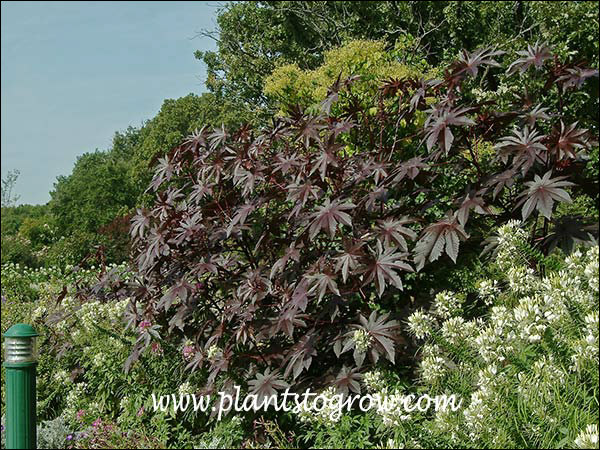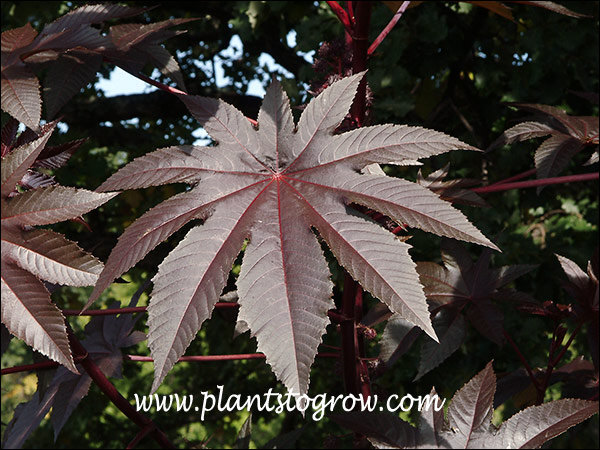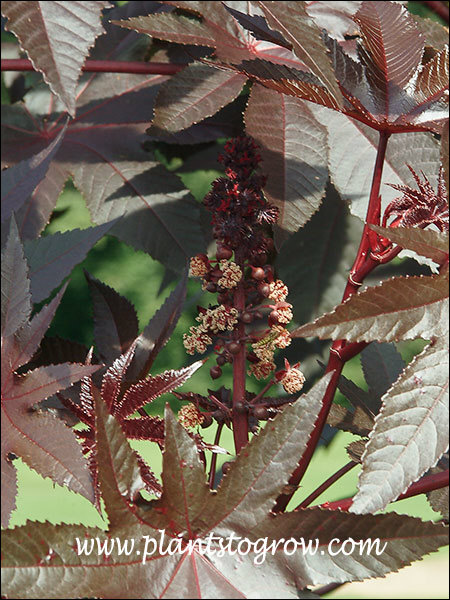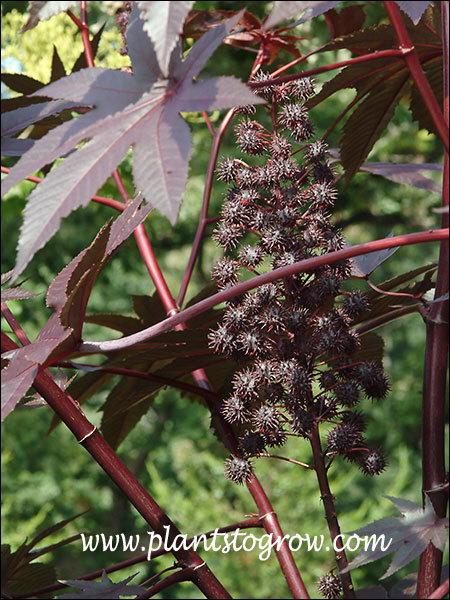| Description | An extremely large, exotic looking plant. Many a child was forced to consume the foul tasting Castor Bean oil to cure any of a number of aliments. |
|---|---|
| Plant Type | All Plants, Annuals |
| Hardiness Zone | tropical |
| Sunlight | full |
| Moisture | average |
| Soil & Site | average |
| Flowers | The flowers lack petals and are found in terminal panics. The male part is made of branched filaments found at the base. The female flower forms feathery pistils. |
| Fruit | The seeds are formed in a spiky fruit. When ripe the rather large, bean-like seeds will be shot (dehisce) many feet from the pod. Seeds are very ornamental each having varied patterns of tan and lighter strikes on the brown seed. |
| Leaves | The foliage color can vary from green to reds and purples and a few variegated forms. The leaves have long petioles (peltate) that attach to the palmately lobed large leaf. |
| Stems | Stems are bamboo-like and notched |
| Roots | Forms a tap root. |
| Dimensions | Very large plants reaching from 6-12 feet tall by equal spread. |
| Maintenance | The plant may need to be staked in open settings. |
| Propagation | seeds, soaked in water, can be seeded directly |
| Misc Facts | The seeds and many other parts of this plant are poisonous but the oil isn't. Castor oil is used in varnish, paints, as a lamp fuel, lubricant and as a Snake Oil elixir. The genus name Ricinus comes from the word ricinus which means tick, the appearance of the seed. They do look like large blood swollen Wood Ticks that can be found on animals. During the middle ages the leaf of this plant was referred to as Palma Christi (the Hand of Christ) |
| Notes & Reference | #48-Harrowsmiths Annual Garden (Bennett and Forsyth), #51-Armitage's Manual of Annuals, Biennials, and Half-Hardy Perennials (Alan Arimitage) |

Cart
